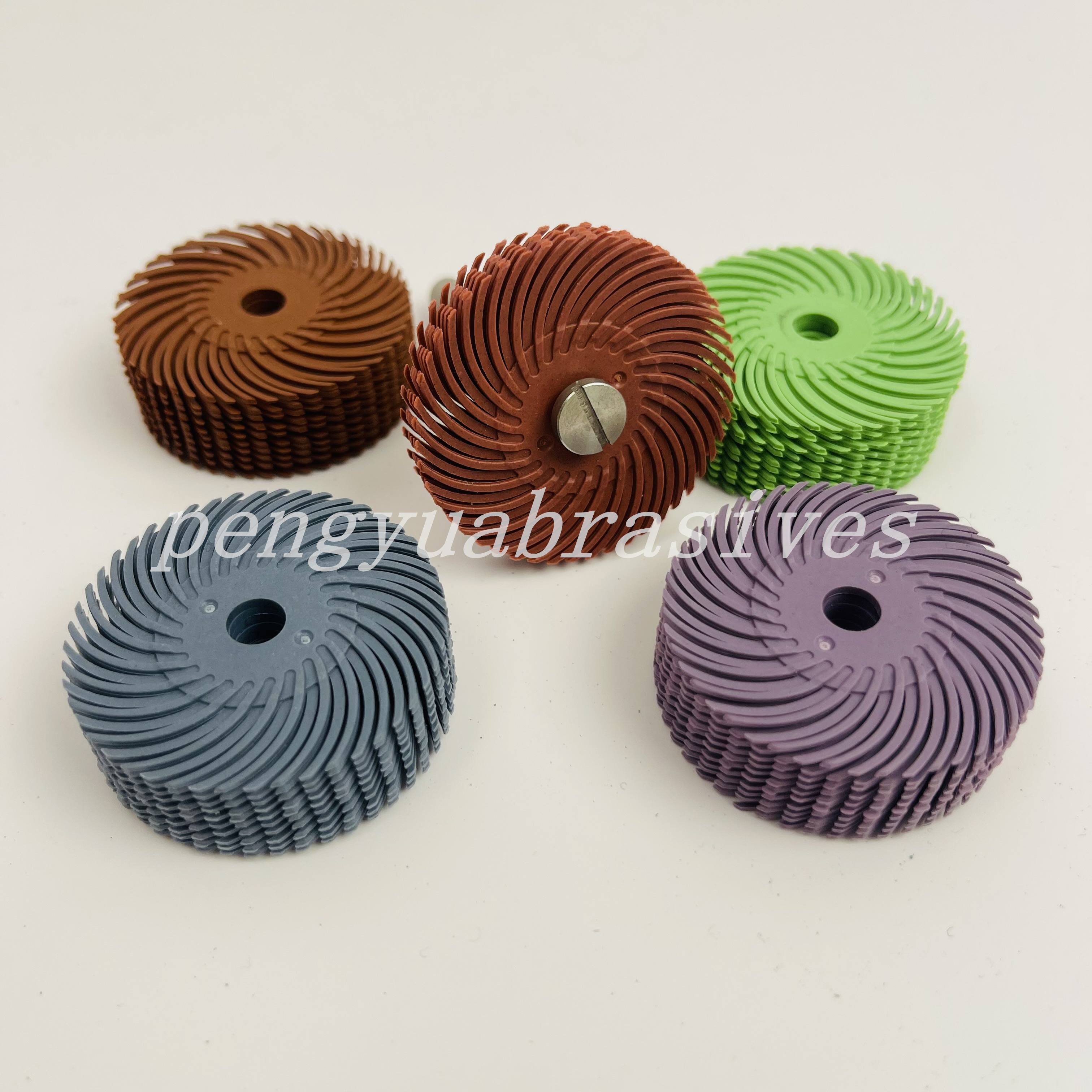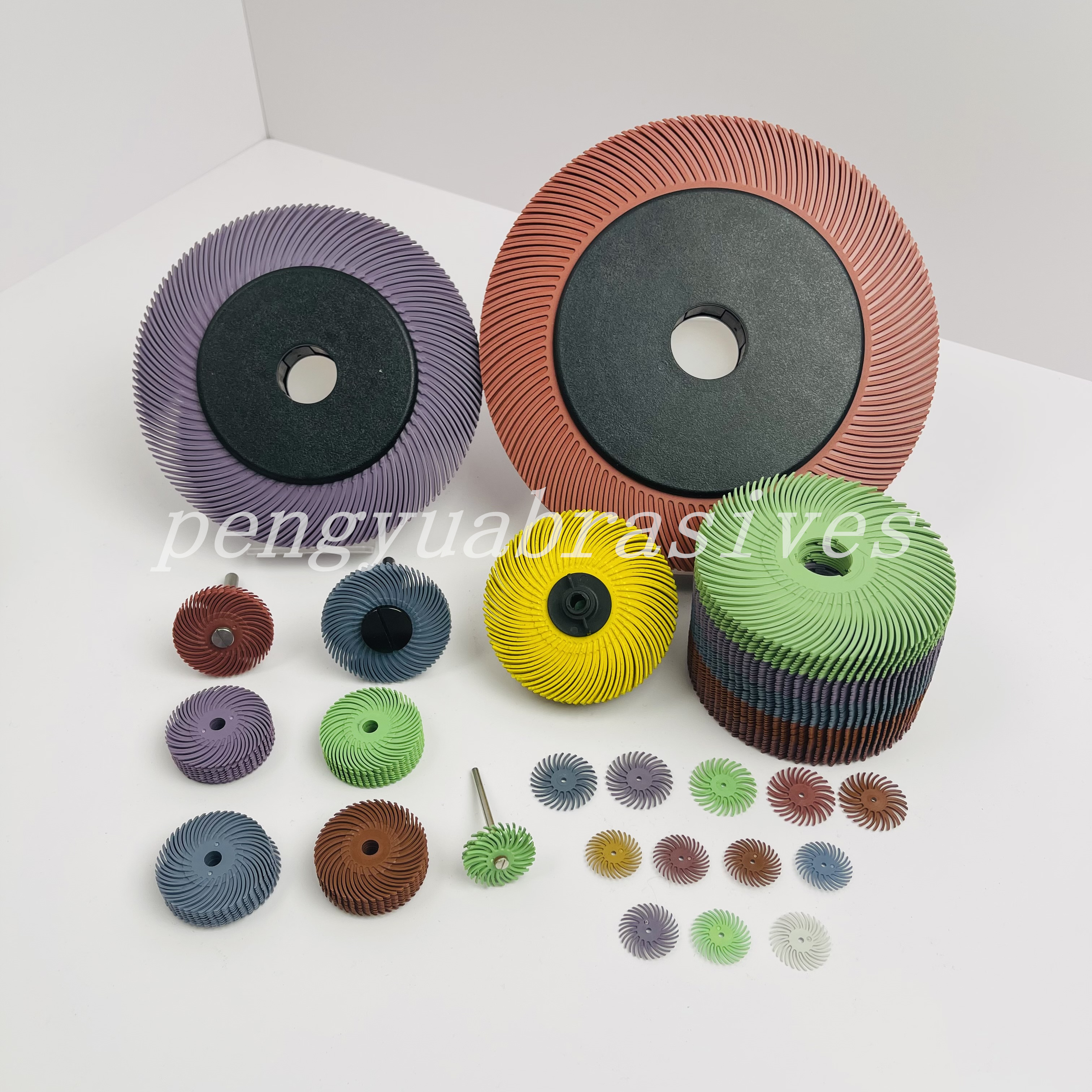Views: 0 Author: Site Editor Publish Time: 2024-09-13 Origin: Site








In the world of jewelry making and metalworking, precision and efficiency are crucial. One tool that has become indispensable for many artisans is the radial bristle disc. This versatile tool offers a unique combination of flexibility, effectiveness, and ease of use. In this article, we'll delve into what a radial bristle disc is used for, exploring its advantages, disadvantages, and best practices for use.
Radial bristle discs, sometimes referred to as radial bristle brushes, have several advantages that make them popular in various finishing and polishing tasks. Here’s a closer look at why these discs might be the right choice for your project:
One of the significant benefits of radial bristle discs is their ease of use. These discs can be quickly attached and removed from a rotary tool or flex shaft, making them a convenient option for artisans who need to switch between tasks efficiently. Whether you're transitioning from sanding to polishing or simply need to change the grit, the radial bristle disc's compatibility with various tools ensures that you can keep your workflow smooth and uninterrupted.
Radial bristle discs are known for their flexibility. This feature allows them to reach areas that are difficult to access with traditional sandpaper or polishing pads. Their design ensures that they can conform to intricate shapes and contours, making them ideal for detailed work. They come in a range of grits, from coarse to fine, allowing for both aggressive material removal and fine polishing, which adds to their versatility.
Another advantage of radial bristle discs is their relatively clean operation compared to alternatives like sandpaper. The bristle discs generate minimal dust and debris, which can be a significant benefit when working in a clean environment or when minimizing cleanup time is a priority. This clean operation also helps maintain a clearer view of your workpiece, reducing the need for frequent interruptions to clear away dust.
Proper usage of radial bristle discs is essential to achieving the best results and prolonging the life of the tool. Here’s a step-by-step guide to using these discs effectively:
Select the appropriate grit and type of radial bristle disc based on your project requirements. Coarse discs are ideal for heavy material removal, while finer discs are suitable for polishing and finishing.
Radial bristle discs are typically mounted on a mandrel. Ensure that the disc is securely attached, with the bristle ends pointing in the correct direction for optimal performance. For rotary tools, make sure the mandrel is firmly fixed to prevent wobbling or instability during use.
Adjust the speed of your rotary tool or flex shaft according to the disc's specifications. High speeds can be effective for quick material removal, but they may also cause the disc to wear out more rapidly. Moderate speeds are often recommended for more controlled polishing.
Gently apply the radial bristle disc to the workpiece, allowing the bristles to do the work. Avoid applying excessive pressure, as this can lead to uneven results and faster wear of the disc. Move the tool steadily and avoid lingering in one spot to ensure an even finish.
After use, clean the radial bristle disc to remove any debris or residue. Store the disc in a dry, clean area to prevent contamination and damage.
Radial bristle discs are particularly useful for a range of users, especially those involved in detailed and intricate work. Here’s who might benefit the most from using these discs:
For jewelry makers and metalworkers, radial bristle discs are invaluable. They are excellent for polishing and finishing jewelry pieces, removing scratches, and achieving a smooth surface on metals. Their flexibility and versatility make them ideal for working on intricate designs and small components.
Hobbyists and DIY enthusiasts who engage in detailed craft projects will find radial bristle discs helpful. Whether you are working on custom pieces, model making, or other intricate tasks, these discs can help you achieve professional-quality finishes with ease.
In the automotive world, radial bristle discs can be used for fine polishing and detailing of car parts. Their ability to conform to complex shapes and achieve a high-quality finish makes them suitable for automotive restoration and detailing tasks.
Radial bristle discs are versatile tools that can be used in various scenarios. Here are a few common applications:
In jewelry polishing, radial bristle discs are used to achieve a smooth and shiny finish. They can remove oxidation, scratches, and other imperfections from metal surfaces, making them an essential tool for jewelers aiming for a polished and professional look.
For metalworking projects, radial bristle discs are effective in preparing surfaces for further processing or achieving a final polish. They are used to clean, smooth, and polish metal components, ensuring a high-quality finish.
While less common, radial bristle discs can also be used in woodworking and crafting for polishing and finishing wooden surfaces. Their ability to reach into detailed areas makes them suitable for fine woodworking tasks.
When working with radial bristle discs, consider the following tips to optimize performance and extend the life of the tool:
Ensure that your rotary tool or flex shaft is compatible with the radial bristle disc. Using the correct mandrel and speed settings is crucial for effective operation.
Regularly check the condition of the radial bristle disc. Replace it when it becomes worn or damaged to maintain optimal performance.
Always wear appropriate safety gear, such as goggles and a dust mask, when using rotary tools and bristle discs. Follow safety instructions to prevent accidents and ensure a safe working environment.
Use gentle, consistent pressure and avoid applying too much force. Practice on a scrap piece if necessary to master the technique and achieve the desired results.
Radial bristle discsare valuable tools for various finishing and polishing tasks. Their flexibility, ease of use, and versatility make them a popular choice among jewelers, metalworkers, and hobbyists. By understanding their pros, cons, and best practices, you can effectively incorporate these discs into your workflow and achieve high-quality results.

